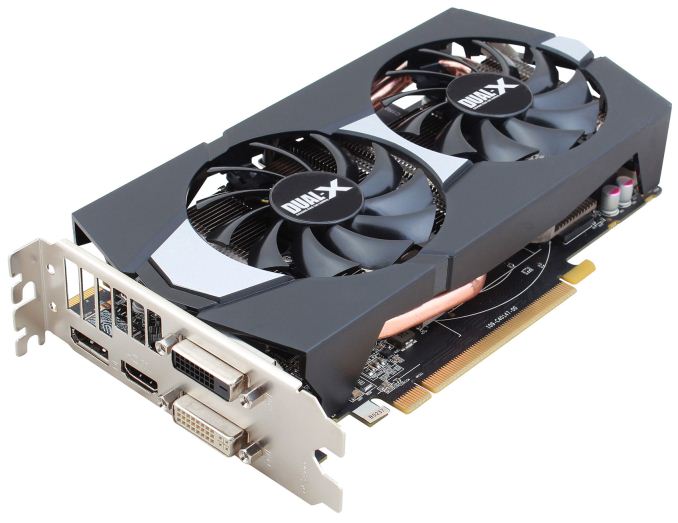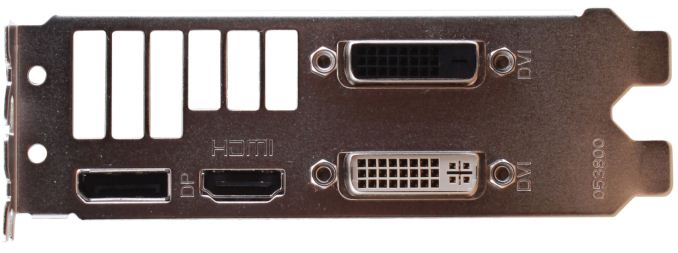The AMD Radeon R7 265 & R7 260 Review: Feat Sapphire & Asus
by Ryan Smith on February 13, 2014 8:00 AM ESTMeet The Sapphire Radeon R7 265
Since the R7 265 is a variant of the existing R7 270 series, AMD isn’t creating a reference card this time around. In lieu of that they have been sending the press Pitcairn cards reprogrammed to the 265 specification, which gives us something suitable to test but doesn’t necessarily represent what the final retail products will look like. For our sample we received a board based on Sapphire’s Radeon R9 270 Dual-X design.
Because we don’t know at this time whether this specific card will be a retail product or not, we’re not in a position to talk about it in depth. But we did want to discuss it briefly, as we expect most (if not all) retail R7 265 cards to be built in a similar manner, especially for the board partners reusing their existing R9 270 designs as was the case here.
Sapphire’s design is fairly typical for a 150W AMD card. Here Sapphire utilizes a compact form of their Dual-X cooler, relying on a pair of 75mm fans mounted over an aluminum heatsink, with a pair of copper heatpipes providing a connection between the heatsink and the Pitcairn GPU underneath. A baseplate brings the package together, providing cooling for the RAM and VRMs, relying on small grooves at various areas to function as a quasi-heatsink and improve convection. This means that it is of course an open air design, and while 150W is not trouble for most cases these days it does bear mentioning.
Sapphire’s Dual-X cooler runs 8.5” long, causing it to slightly overhang the 7.9” PCB. The card doesn’t feature a dedicated stiffening mechanism of any kind, but the baseplate is just large enough to provide the necessary rigidity on its own. Elsewhere the required 6pin PCIe power socket is located at far end of the PCB, orientated parallel to the PCB itself and slightly obscured by the card’s shroud; so you’ll need a bit more room behind the card to work in the necessary power cabling.
Finally, at the front end of the card we find half slot vent, coupled with AMD’s current generation I/O layout of 1x DisplayPort, 1x HDMI, and 2x DL-DVI. Notably, Sapphire has also added themselves to the pool of board partners with this design by using a wider grating spacing in an attempt to improve airflow, subdividing their vent into just 6 relatively large segments.













52 Comments
View All Comments
TheJian - Wednesday, February 19, 2014 - link
How is that possible when all of the pricing is fake? You are ignoring REAL pricing much like anandtech. They should draw conclusions based on REAL pricing, and ignore ALL companies MSRP. If I can't buy it, it's still fake until I can for MSRP. IE, 290x is $700 right now (actually $709 cheapest on amazon - 3 in stock), NOT $550. So reviews based on $550 pricing are not real. Anandtech continues to give the benefit of the doubt 'one day it might be MSRP and a good deal if they can get to MSRP quickly'...LOL. Is a $709 290x a good deal vs. 780ti? NOPE.thejoelhansen - Saturday, April 26, 2014 - link
I hope I didn't overlook something obvious, but are the GTX 760 results missing?